Nuclear Reactors For Investors
Submitted by Steffan Szumowski from The Nuclear Review
“We’re designing a Liquid Metal Reactor”
“Our design will utilize proven technologies”
“The design makes our reactor ‘walk-away safe’”
There’s a growing list of public and private companies that are working to build reactors for various purposes. These reactors vary widely in their design, size, output, and potential purpose. Everything is on the table: from using the same designs we've used for decades to novel ideas still only on the drawing board.
This article is designed to serve as a point of reference when reading about a new company and the reactor they’re designing. Some of the features companies discuss are less novel than they sound, and vice versa. Hopefully, the information provided here can provide a more clear picture for the investor to make an informed decision.
Reactor Designs Features
Skipping the nuclear physics details, since the basic principles are consistent across the designs we’ll explore, a nuclear reactor facilitates the controlled fission of uranium atoms, harnessing the resulting energy for various applications. After that, the differences we see in reactor designs are mostly in the choice of the fuel, moderator, and coolant.
If we include all the variations that have been used over time and the novel ideas yet to be produced, this will get out of hand. We’ll only be focusing on the most common options.
Fuel
Uranium is king when it comes to fuel for nuclear reactors. Compared to the other fuel options, thorium and plutonium, uranium wins out mostly due to natural abundance and path dependence. You don’t just drop in a chunk of uranium from the ground though. It’s often enriched and comes in a few different forms:
- Uranium Oxide (UO2) - The most common fuel for water-cooled reactors. The pellets are stacked inside fuel rods and loaded into the reactor core, and then replaced about every two years. The design holds major historical preference, but is less useful in high temperature applications, such as in reactors intended for industrial heat processes.

- Uranium Zirconium (U-Zr) - This alloy improves on the UO2 fuel design in respect to thermal conductivity. U-Zr has improved conductivity and no oxygen, which makes it ideal for use in reactors with liquid sodium. But, with a lower melting point, it isn’t able to be used in gas-cooled reactors.
- Uranium Zirconium Hydride (U-ZrH) - This fuel is unique with its addition of hydrogen. The hydrogen acts as a balance to help shutdown reactors when temperature gets out of control and spikes up. This is why U-ZrH is typically found in research reactors at universities and national laboratories; when combined with additional cooling measures and engineered hydrogen management, the fuel offers a near “walk-away safe” capability.
- Mixed Oxide (MOX) - Plutonium Oxide (PuO2) can be mixed with UO2 to create MOX for use in many types of reactors, including those that would normally operate on UO2 pellets. MOX is not widely used in the US, and is instead more extensively used in the French commercial fleet. It enables useful consumption of old nuclear weapons materials and recycling of spent nuclear fuel.
- Tri-structural Isotropic (TRISO) - The “Cadillac” of reactor fuel is the newer TRISO design, which is a spherical UO2 pellet encased in layers of pyrolytic carbon and silicon carbide. This provides enhanced durability for fuel failures. Its costs are comparatively high, considering the overall fuel density is only 5% that of UO2 fuel, but this is potentially countered by reduced protective design features of the reactor plant due to the fuel’s superior integrity.

A frequent topic of discussion is also the enrichment levels of fuel, especially with some of the newer reactor designs requiring more highly enriched fuel than has traditionally been used in the commercial fleet. The enrichment in nuclear fuel refers to the percentage of fissionable, or fissile, material in the fuel. This fissile material is the uranium isotope U-235, with the majority of the rest of the uranium in the fuel being non-fissile U-238. Enriched fuel is usually required, since natural uranium mined from the ground is around 0.7% U-235, and most reactors need enrichment levels around 3-5%. The sub-5% enrichment level is referred to as Low Enriched Uranium (LEU). Some of the newer commercial reactors though require High-Assay LEU (HALEU), which is enriched to around 15-20% U-235. There are even higher levels of enrichment, usually reserved for government-sponsored research and military use due to proliferation concerns.
Moderator
The moderator is used in “thermal” reactors to slow down the neutrons flying around in the core, which allows them to more easily interact with uranium and cause fission. Most of the current global fleet operates on this principle. Moderators have typically been:
- Light water (H2O) - This is just normal water with additional filtering and chemistry controls. Abundant, cheap, and excellent for slowing down neutrons given hydrogen has similar mass to the fission-inducing neutrons.
- Heavy water (D2O) - Better suited for moderating than H2O due to the deuterium (an isotope of hydrogen) having a significantly smaller chance of absorbing one of those fission-inducing neutrons. It’s not used as much in the global reactor fleet (mostly used in Canadian reactors) due to its complicated and expensive production process.
- Graphite - Used as a moderator in the form of solid blocks. Use of graphite also means a second material will need to be used for the coolant, compared to H2O/D2O that fill both the moderator and coolant roles. Graphite holds a heat tolerance advantage over water moderators, enabling higher core temperatures and better thermal efficiency.
Compared to thermal reactors, “fast” reactors operate without a moderator, allowing neutrons to maintain their higher, “fast” energy. This enables the use of a broader range of fuels, while also offering the potential for reactors to breed more fuel than they consume. They can also operate at higher temperatures than most thermal reactors, enabling additional potential applications. Fast reactors aren’t without their disadvantages though, as most of them intend to use HALEU, contributing to higher start up costs and a growing concern for a current lack of that fuel’s supply chain. Lastly, there are engineering and operational challenges with handling high-energy neutrons and materials, some of which may be unquantifiable until actual system operation can be further observed.
Coolant
All reactors have a coolant to meet two main objectives: first, to get the energy from fission out of the core to prevent overheating, and second, to transfer that heat to the secondary system for electrical generation or other industrial purposes. Coolants are usually:
- H2O or D2O - The most frequently used coolant for the current global fleet. The material is cheap and abundant, but requires high pressurization to prevent boiling for non-BWRs, and its moderation ability is a downside for fast reactor applications.
- Liquid Sodium - Significantly higher boiling point and thermal conductivity compared to water. This enables lower operating pressures and higher thermal efficiencies. There’s a horrible potential downside though, as sodium reacts violently when exposed to water or air.
- Molten Salt - Similar to sodium with its higher thermal conductivity, but with an advantage of a melting point almost twice as high as sodium. The downsides are less precedence in nuclear history and a much higher melting point, leading to solidification concerns. Molten salt also has a complex structure, such as toxic and expensive beryllium, the requirement for enriched lithium, and tritium production concerns. Tritium in particular has received significant attention in recent years, as it is one of the main points of contention for how to handle the cooling water used during and after the Fukushima disaster.
- Inert Gas - Helium and carbon dioxide have been used in gas-cooled reactors with graphite as the moderator. The balance here is less corrosion and radiation than sodium and salt reactors while still gaining high thermal efficiency, but the smaller power density leads to the requirement of having to construct much larger reactor cores.
Reactor Design Combinations
Put all these different fuels, coolants, and moderators together, and what do you get? The four major reactor designs that most investors will come across when evaluating companies in the nuclear industry:
Light Water Reactor (LWR)
The US’s current fleet is made of two subsets of the LWR category: the pressurized water reactor (PWR) and boiling water reactor (BWR). Both of these designs use light water as the coolant and moderator, with UO2 as the fuel. LWRs have the most reactor-years of operation and experience, with no close second.

PWRs use a pressurized system to enable higher operating temperatures without boiling the coolant. The water passes through the core (primary loop) to take away fission heat and transfer that energy through a heat exchanger to the secondary water system (secondary loop). There, the water is allowed to boil so the steam can drive a turbine for electricity production. Radiological concerns are therefore minimized to the primary loop, but additional systems are needed to maintain pressure and obvious concerns come with operating at significantly higher pressures.
BWRs operate by letting the water boil in the core and using that steam to directly spin a turbine. This enables the BWR to have a simpler system, but radiological concerns now include all the way out to the electrical generation system, versus just within the primary loop.
Companies building/developing LWRs: Cameco (Westinghouse), NuScale, GE Vernova, Holtec, Hadron, Rolls-Royce

Sodium-Cooled Fast Reactor (SFR)
These reactors gained runtime under multiple test reactors, including Phénix and Superphénix in France, Joyo and Monju in Japan, and the FFTF and EBR-II reactors in the US. Unmoderated and liquid sodium cooled, SFRs can use multiple types of fuel, such as U-Zr and MOX. Their initial operations were marred most notably by difficult-to-repair leaks, leading Admiral Rickover to shun one of the earliest sodium reactors in favor of PWRs for his nuclear submarine program. SFRs offer potential benefits though with higher temperatures and thermal efficiencies, which leads to additional use cases in industrial applications. Lastly, there is potential for them to act as breeder reactors which can produce more fuel than they consume.
Companies building/developing SFRs: TerraPower, Oklo, Aalo
Molten Salt Reactor (MSR)
These reactors have the least experience among current reactor designs. MSRs can operate as thermal reactors with almost any fuel, a graphite moderator, and molten salt as the coolant. Newer designs also have the MSRs operating as fast reactors. These designs can even have a novel fuel dissolved directly into the molten salt coolant itself with no moderator. The thermal reactor version has similar use cases to SFRs, due to the high operating temperature.
Companies building/developing MSRs: Kairos, Terrestrial, Natura

High Temperature Gas-Cooled Reactor (HTGR)
It is important to note that HTGRs are different from their predecessors, the Gas-Cooled Reactor (GCR). The older GCRs were only focused on generating electrical power for commercial grids. They had to be significantly larger than PWRs due to using less-enriched uranium and poor energy density of the coolant, usually carbon dioxide. The newer HTGRs are designed to use enriched uranium, usually TRISO fuel, with graphite moderation and helium cooling. Precedence for HTGRs can be found in reactors like Fort St. Vrain in the US and the Thorium High-Temperature Reactor-300 (THTR-300) in Germany. The current designs being developed haven’t varied much from previous HTGRs, which may yield easier licensing processes. The higher operational temperatures of HTGRs will allow for more uses than just electricity.
Companies building/developing HTGRs: X-energy, Radiant, Valar, Terra Innovatum, Nano Nuclear, BWXT

Considerations for the Potential Investor
The likely question an investor would ask at this point is: which one is best? Unfortunately there is no good answer to this question. They all have distinct advantages and disadvantages that need to be compared to the company’s intended market, and then backtested to try and infer the reactor’s chance of success. Here are a few topics to help evaluate a company’s project:
Capacity Factor
The capacity factor is a measure of how consistently a reactor achieves its maximum rated output. The champions of the capacity factor are large LWRs, with a well-documented recent history of over 90%. This contrasts greatly with some of the other reactor designs, such as SFRs that saw significantly lower capacity factors due to ongoing material management issues, such as leaks. A lower capacity factor will mean operational delays, additional costs, and less revenue. HTGRs are better off than SFRs, however still not as consistently high as LWRs, and MSRs are still relatively untested.
Important to additionally note is the time it takes to achieve a high capacity factor. LWRs did not achieve a 90% capacity factor in their first year of operation. Some new reactors struggled to achieve capacity factors in the teens in their first years of testing. It took multiple decades of experience to gain the capacity factors that we see today. Also, the experience that has been gained is on the equipment and designs we currently use, not what is still on the drawing board. It is almost inappropriate to assume that a reactor that has never been operated can achieve a high capacity factor on its first day of operation.
Of particular concern should be when a company describes a feature of their reactor as novel. This can directly translate to future engineering and licensing issues, in addition to operational concerns (likely unaccounted for), leading to new costs.
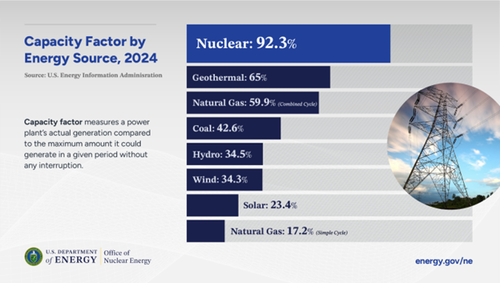
Power Rating
A more minor, yet still important, point to be mindful of; particularly when evaluating the intended market for a reactor. The term for describing the output of a reactor goes by multiple names, including power rating, nameplate rating, thermal power (MWt or MWth, interchangeable), and electric power (MWe).
The number to be asking and looking for is the MWe, as this number describes the actual energy that a commercial reactor would output to a connected load or electrical grid, and could be used for revenue projections based on electricity rates. The number frequently given in lieu of the MWe is MWt, which is a measure of the power generated inside the reactor core. This number does not reflect what the usable output of the reactor will be, and is a poor gauge of the reactor’s potential application.
While not exact, as efficiency varies based on reactor design, a rule of thumb for converting MWt to MWe is to divide the MWt by three. So, a reactor marketed as rated to 300 MWt is about 100 MWe. This MWe number could then be taken and compared to the output of a diesel generator or coal/gas/solar/wind system, to see where replacement opportunities may exist.
The Small Modular Reactor (SMR)
The term used to have some definition to it, with the hallmarks of a small footprint and lower power output. The SMR also offered a wide range of new possible applications, including, but not limited to: remote communities, process heat, mining operations, military installations, marine propulsion, disaster response, and desalination.
But recently, some of the designs claiming the SMR label have swelled in size and rating, while the large reactor designs have gained modularity features. This has led to a loss of significance of the term SMR, as it now applies to an ever-widening array of designs. At this point, it seems to be mostly used as a marketing tactic, with its mention still catching the attention of most investors.
While some companies have progressed through the licensing process, none of them have actually successfully built and operated their SMR. This means there is no means of projecting potential engineering, licensing, construction, or testing problems that should be very reasonably expected. The only example to extrapolate potential issues from is the Vogtle 3 and 4 reactors. They had the most experienced reactor planning, engineering, and construction teams they could ask for, and yet through a combination of regulatory struggles, engineering complications, and construction management failures, they were built at a miserably slower speed than projected and at a dramatically higher cost.
Even with this recent example on full display for everyone, most new reactor production companies promise commercialization of their designs within the next five years. This is likely beyond achievable for many.
Precedence vs Innovation
This has arguably been one of the more divisive approaches to the development of newer and smaller reactors. Should the team pursue a more advanced reactor with innovative design aspects and novel safety features? Or, should they stick to what works, not fix what isn’t broken, and try not to reinvent the wheel?
Precedence offers familiarity. LWR designs benefit from decades of operational history. This reduces uncertainty in licensing, construction, and operation. These designs still face problems, as discussed above, but due to recently completed construction and testing programs, uncertainties have been greatly diminished. It’s no coincidence the most recently certified reactor designs are LWRs from NuScale and Cameco’s Westinghouse.
On the other hand, innovation brings the potential of disruptive advancements. Designs like SFRs, MSRs, and HTGRs promise higher thermal efficiencies, broader fuel flexibility, and potential new applications beyond electricity generation. Yet, innovation also brings uncertainty. The NRC is still unfamiliar with these designs, leading to prolonged approval times and rejection in some cases such as with the Aurora SFR from Oklo. Engineering and construction challenges will likely reveal themselves later in the process, resulting in cost overruns. The argument can be further tipped back in favor of novel designs though, as more safe design features like TRISO fuel could increase chances of licensing success.
For investors, this balance demands careful evaluation. A company pursuing innovation should have strong partnerships, a credible roadmap, and a clear path to de-risk novel aspects. Conversely, companies relying on precedence must show a competitive edge in cost, efficiency, or scalability compared to peers.
Conclusion
Investing in the next generation of nuclear reactor technologies is about as exciting as it gets. The spectrum of designs from tried-and-true LWRs to innovative MSRs offers opportunities to shape the future of energy. Yet, diversity in a highly technical industry brings an equally high degree of difficulty when it comes to choosing which company to invest in.
Successful investments in this space demand more than enthusiasm; they require discernment. The key lies in understanding concepts like capacity factor, licensing hurdles, construction timelines, and operational precedents. Companies championing well-understood designs bring the advantage of reduced uncertainty, but may face limitations in application and heavier competition. Meanwhile, pioneers of novel reactor concepts promise groundbreaking advancements but must navigate uncharted engineering, regulatory, and market waters.
Ultimately, the winners in this field will be those who can bridge the gap between vision and execution, and manage expectations. Serious advantages are also held by companies with operational test reactors at national laboratories and universities. They’re gaining the actual runtime needed to improve their designs and manage future risks. For investors, due diligence is paramount. Look for companies with clear roadmaps, realistic timelines, and strategic partnerships that can mitigate risks while capitalizing on opportunities.
Tyler Durden
Fri, 12/12/2025 - 07:20










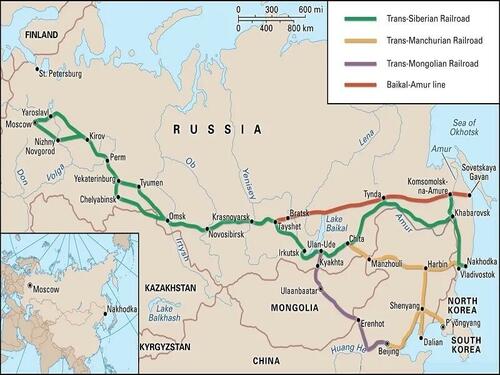


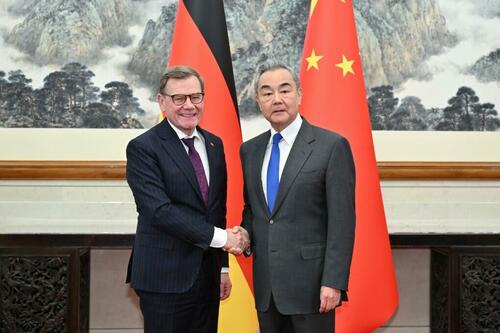


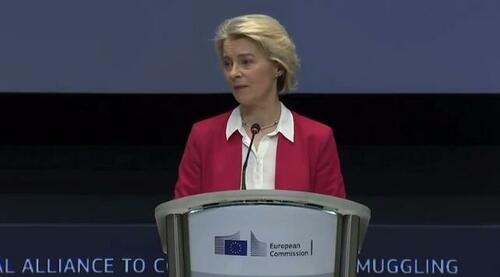
 US Navy image
US Navy image


 A nurse holds a COVID-19 vaccine in Miami, Fla., in this undated file photograph. Joe Raedle/Getty Images
A nurse holds a COVID-19 vaccine in Miami, Fla., in this undated file photograph. Joe Raedle/Getty Images Author, media commentator, and clinical psychologist Jordan Peterson addresses the 5th Demographic Summit in the Fine Arts Museum in Budapest on Sept. 14, 2023. Attila Kisbenedek/AFP via Getty Images
Author, media commentator, and clinical psychologist Jordan Peterson addresses the 5th Demographic Summit in the Fine Arts Museum in Budapest on Sept. 14, 2023. Attila Kisbenedek/AFP via Getty Images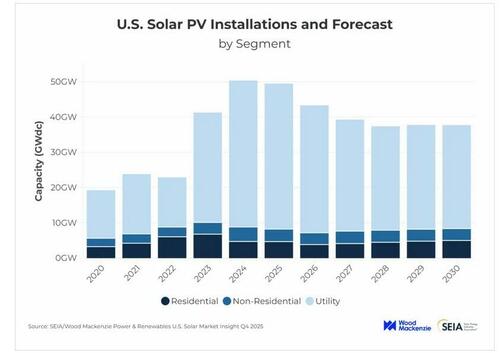
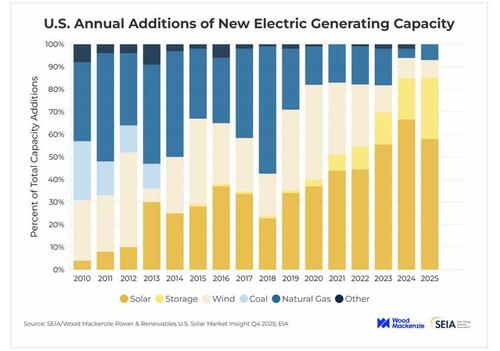
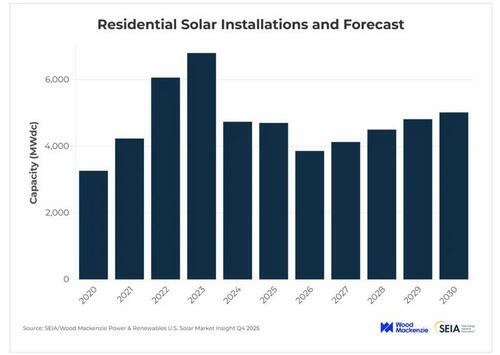


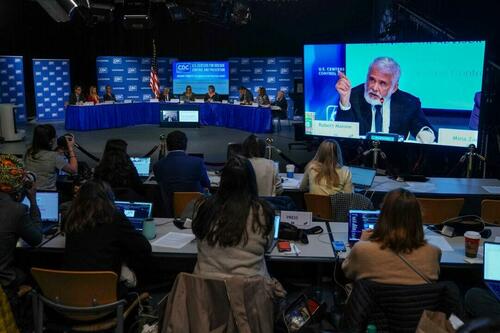 Dr. Robert Malone speaks during a meeting of the CDC Advisory Committee on Immunization Practices (ACIP) in Atlanta, Ga., on Dec. 5, 2025. Elijah Nouvelage/Getty Images
Dr. Robert Malone speaks during a meeting of the CDC Advisory Committee on Immunization Practices (ACIP) in Atlanta, Ga., on Dec. 5, 2025. Elijah Nouvelage/Getty Images
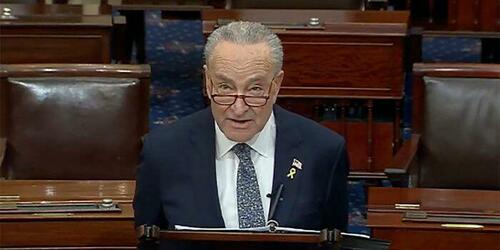 Chuck Schumer / PHOTO: Senate TV via AP
Chuck Schumer / PHOTO: Senate TV via AP

Recent comments